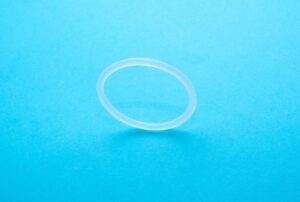While some are more likely than others to develop fibroids, everyone can benefit from actions that lower fibroid risk. Now, not all women begin with an equal risk of developing these non-cancerous uterine growths. After all, factors such as race, family history and hormone levels can make you more likely to develop fibroids. More specifically, estrogen levels seem directly linked to fibroid growth.
What does that mean for women, since we all produce some level of estrogen in our bodies? Well, we must watch our exposure to endocrine-disrupting chemicals since they change how hormones work in our body, thereby increasing fibroid risk. Well, we must watch our exposure to endocrine-disrupting chemicals since they change how hormones work in our body, thereby increasing fibroid risk factors. But how can we know when we’re being exposed? If you see BPA (or Bisphenol A, a common chemical in plastics), steer clear—it activates estrogen receptors in your body, causing levels to rise and making this your body’s dominant hormone.
In that way, chemicals can indirectly impact fibroid risk. But new evidence has even directly linked BPA to fibroid growth. Either way, women with estrogen dominance (more on that in a minute) have a high fibroid risk. As such, we’ve learned that balancing hormone levels can keep new fibroids from forming, and existing growths from getting bigger.

You’re dealing with estrogen dominance if your body produced more estrogen than progesterone. Now, you need both hormones for your body to function properly, but they should exist in balance. When one outpaces the other, your body can’t function optimally.
But what causes estrogen dominance? For some women, their bodies naturally produce more estrogen; but for some women, the imbalance is due to environmental hormone exposure. Now, estrogen dominance isn’t always a problem: some women’s bodies can break down the extra hormones to maintain an internal balance. So, the trouble begins if your body can’t break down excess estrogen, allowing levels to build up in your body.
Estrogen dominance symptoms include:
· Weight gain and PMS
· Dense breasts
· Fibroids
· Endometriosis
· Heavy periods
· Fatigue
· Reduced sex drive
· Fertility problems
Doctors use one of three tests to measure estrogen levels. Women who still menstruate can get accurate results from a blood test. In contrast, a saliva test delivers more accurate results after menopause. Finally, if your doctor suspects a hormonal imbalance, a dried urine test is likely to be the best testing option.
What should you do if it turns out you have estrogen dominance? First, try to determine if the imbalance is due to genetics, or more likely linked to environment and diet. And, regardless of the cause, making simple lifestyle changes can help your body return to a state of balance.
In some cases, you’ll need medication to rebalance hormone levels. But often, making simple changes in your daily life can make a big impact on your hormone levels, and reduce your risk factors for fibroids.
Meat and dairy products are packed with added hormones. Choosing organic versions of these items can help lower excess estrogen levels in your body. But you should also up your fiber intake with veggies that can flush away excess hormones. Try cauliflower, broccoli and kale, for starters. Now, organic veggies are a great choice. But even non-organic options can help reduce your fiber risk. In fact, this study in Science Direct proved that women who ate more fruit and veggies were 10% less likely to develop fibroids than those who ate less than one serving per day of these fiber-filled favorites. Also, to indirectly impact your hormone levels, try keeping the good bacteria in your gut balanced with probiotic-rich foods such as yogurt. It's important to know what the best and worst foods for fibroids are.
Did you know that containers in your home could contain hormone enemies? Sadly, it’s true—but you can help fight hormonal imbalances by breaking up with plastic water bottles and food containers in favor of stainless steel, glass or other choices that are better for you (and the environment!)
Stress can throw your hormones out of whack, so you have to constantly work at relaxation. First, aim for a minimum of seven hours sleep each night. Make time for yourself, every day, whether that means soaking in a bubble bath or reading a great book over your favorite cup of tea. Finally, incorporating yoga in your routine can help you manage stress while boosting your activity levels! If you're experiencing fibroid-related stress or symptoms, contact our Fibroid Doctors in Dallas for guidance and treatment options.
As we just hinted, getting regular exercise could lower fibroid risk by managing stress and by helping you reach or stay at a healthy weight. Why is this second point important? As it turns out, carrying extra weight can lead to a hormonal imbalance.
Of course, not every case of hormone imbalance can be managed with changes to your lifestyle. In some cases, you may need to explore medical interventions. But, since all of these changes are good for you anyway, they’re a great place to get started on your journey toward a healthier lifestyle—and a reduced risk for so many medical conditions. Just remember, even with a reduced risk, you may still develop fibroids. And if you do, come see our Dallas-area fibroid specialists to explore your treatment options like uterine fibroid embolization.
Sources: Fertility and Sterility Journal, Mayo Clinic

Our Locations
Monday - Friday
8am - 5pm
Dallas
3920 W Wheatland Rd,
Suite 108,
Dallas, TX 75237
Plano
5425 W. Spring Creek Parkway,
Suite 100
Plano, TX 75024
Scheduling
Please contact our dedicated specialists to schedule a consultation today.
2025 Dallas Fibroid Center. All rights reserved. Website Design by Healthcare Success